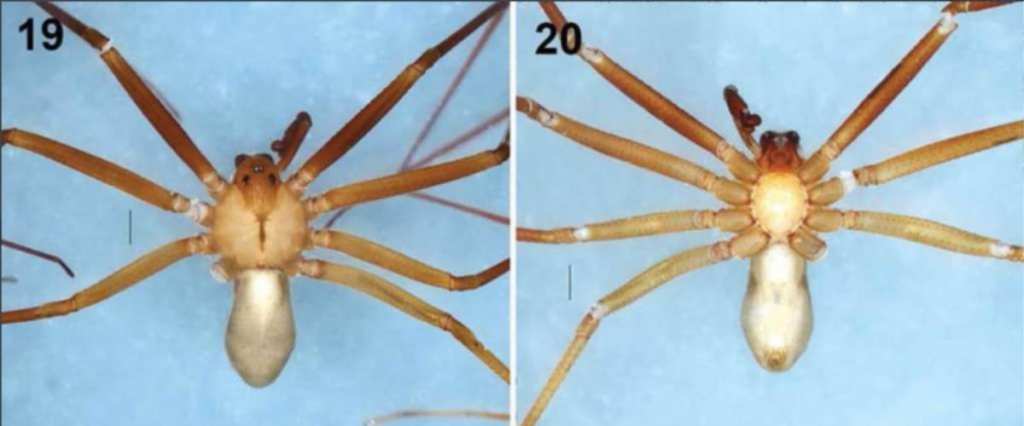Trending Now
Despite the fact that the perform a very necessary and friendly service, spiders aren’t exactly beloved by the masses. They eat bugs we don’t like – especially mosquitoes, things that sting, and destructive little turds that eat up our gardens – but for some people, even knowing this can’t negate their screeching reaction to anything with 8 legs darting into their field of vision.
With Loxosceles tenochtitlan, well, we all have reason to run quickly in the other direction. In fact, best return with a really big shoe.
A group of college students and their professor recently discovered a new species of violin spider in the Valley of Mexico. At home in the mountainous and volcanic plateau, this violin spider (aka “fiddle-back” spider aka “recluse” spider) has the typical characteristics of a violin pattern on its back and some seriously toxic venom.
National Autonomous University of Mexico professor Alejandro Valdez-Mondragon talked a little about the discovery.
“At first glance, it can be identified because its dark brown color is not striking, and unlike other species in the country, it has a dorsal pattern in the form of a very visible violin.”
The bite of a violin spider won’t kill you, but it will likely send you to a doctor. The venom is relatively painless at first, but as it turns tissues purple and pink, that’s the sign it is beginning to rot your flesh.
And that is painful.
The condition is sometimes called Loxoscelism, and is characterized by a necrotic wound at the site of a bite that can persist for a couple of months. Some people even require plastic surgery to repair the damage.
“The critical stage is the first 24 hours, and sometimes up to 48 hours when you begin to see the effects. The reaction begins with a sore that expands and produces quite considerable tissue necrosis (or death of tissue),” Valdez-Mondragon told the Yucatan Times.
https://www.instagram.com/p/B5qGJkThcFG/
They like to live in dusty basements or warehouses – places with lots of cracks to hide in (and hunt from). Lest you be overly concerned, these guys generally avoid humans (hence the moniker “recluse spider”), but as climate change shifts temperatures across the globe, this genus of spiders – 140 types and counting – will spread farther and farther.
Right now, 40 of those 140 are found in Mexico, so if things continue on their current path, people in the States should start familiarizing themselves with more types of recluse spider very soon.
Yay.






